Goats milk soap is a very popular soap to make. You can make it with either fresh goat’s milk or you can use goat’s milk powder. The milk adds a creaminess to the soap and the sugars in the milk add to bubbly lather. Here is how to make soap using fresh goat’s milk. You can also use this method using other types of milk including coconut, hemp, almond, soy or even cow milk.
The main concern with making goats milk soap is overheating of the milk/lye solution or overheating in the mold. When the lye solution overheats you can get scorched milk which means it will darken and even speckle your soap. When the soap in the mold overheats you can get all kinds of issues including mushrooming, separation, cracking or other issues. (Take a look at my troubleshooting page to see what some of these issues look like.)
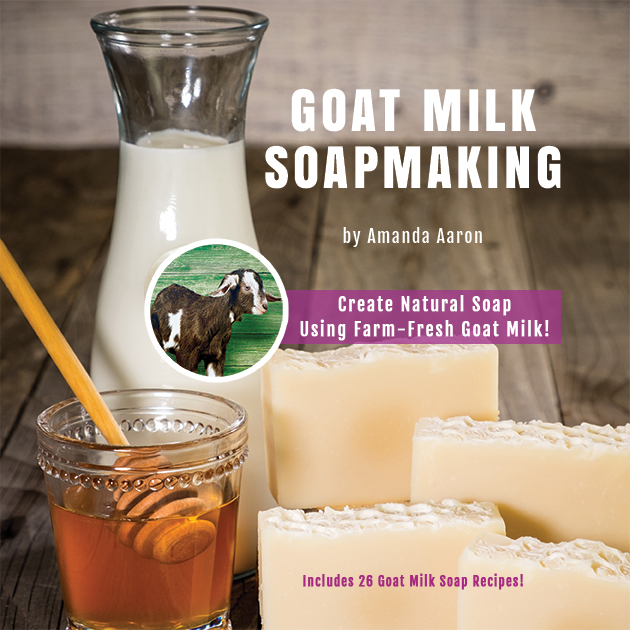 For more details on making goat milk soap, check out our eBook Goat Milk Soapmaking! It includes directions for full-milk soapmaking as well as the milk-in-oil method.
For more details on making goat milk soap, check out our eBook Goat Milk Soapmaking! It includes directions for full-milk soapmaking as well as the milk-in-oil method.
To keep the lye solution nice and cool I start with frozen goat’s milk. As you sprinkle on the lye…it melts the goat’s milk gently without getting too hot. I also set the lye solution in an ice bath.
Goat Milk Soap Recipe
Coconut oil – 20 oz
Olive oil – 20 oz
Rice bran oil – 5 oz
Avocado oil – 5 oz
Castor oil – 4 oz
Shea butter – 5 oz
Sweet Almond oil – 5 oz
Goat’s milk – 18 oz
Lye – 9 oz
First we create the lye solution. My goat’s milk is frozen in plastic freezer bags.
Take the frozen milk out of the bags and chop into smaller pieces.
Weigh the required amount. I like to put a splash of water with the goat’s milk to start the lye dissolving. You don’t need much; I used about an ounce.
Create an ice water bath by putting ice cubes and water into a bowl big enough to set your lye container into (red bowl above). Sprinkle about 1/4 of your lye and start mixing. One of the cool thing about soaping with milk is that you don’t get the fumes like you do when making a lye solution with water. I have no idea why…but you don’t. Its important to sprinkle your lye while mixing and not dumping it entirely into the goat’s milk. If you just dump it, it can create crusty lye clumps that are hard to dissolve because there is not initially enough liquid to dissolve it all at once. Some of these lye clumps can go without getting dissolved and end up in your finished soap. You don’t want that! So start with sprinkling about 1/4 of the lye and mix mix mix. It will start melting the goat’s milk.
Once it melts a bit, add another 1/4 of the lye and mix some more. Do this until you have completely mixed in the lye. Please note that your lye solution can turn bright yellow! This is a bit shocking, but it is normal.
Put your lye solution aside. I keep it in the cold water bath and just set it in the sink.
 Check out my Goat Milk Soapmaking hardcopy book on Amazon.com.
Check out my Goat Milk Soapmaking hardcopy book on Amazon.com.
After reading this book you’ll be able to make decadent goat milk soap for your family and friends. Goat Milk Soapmaking includes:
- Full color, step-by-step Instructions for making soap using any type of milk. Goat milk is the most popular but you can use these directions for making camel milk soap, cow milk soap or even a vegan milk soap such as almond milk soap.
- Helpful charts explaining oil properties/fatty acid profiles and additives.
- Essential oil blends to get you started with choosing how to scent your goat milk soap.
- 24 natural goat milk soap recipes with essential oil blends for scent and natural colorants and additives to make each unique.
- Helpful resources including common soapmaking terms, abbreviations and a supplier list.
Let’s prepare the oils.
Melt the hard oils. This includes the coconut oil and the shea butter.
Add the liquid oils to the melted oils. Adding the liquid oils to the melted oils helps to bring the temperature down. If we were to measure out all of the oils (liquid and solid) and then melt…the temperature of the total mixture would be hot and we’d have to wait to bring the temps down. It is unnecessary to heat the liquid oils along with the solid ones.
Once we have the oils ready…its time to make soap! You can add your fragrance to the melted oils. I used a bit of litsea and tea tree essential oils. The litsea tinted the soap a bit towards yellow.
Give the lye solution a good stir. You can see there are some globs in it. Milk contains fat so this is a bit of that fat turning into soap. I like to give it a good whisk to break the globs up a bit…but I’m sure the stick blender does that as well.
Add the lye solution to the oils.
Bring the mixture to trace.
Pour into your molds. I’m using a couple of Bramble Berry silicone loaf molds and trying out their new sphere mold. You can use any type of molds that you want but realize that larger volume loaf or block molds will hold more heat and can cause your soap to overheat. You can even put your molds in the fridge or freezer to help keep the in-mold temps down but mine were fine as they were.
Un-mold 24 hours later, slice into bars and cure for 4 or more weeks. When you first cut the soap it can have an ammonia type of smell. It should go away after a couple of days. (So don’t think you did something wrong! It’s normal.)
The sphere mold – I was trying this mold out for the first time. The soap did not gel and its a softer recipe so I was a bit concerned with un-molding. Because the inside of the mold is smooth as glass, I had no issues with the soap sticking. It un-molded beautifully and created some super smooth, super cute round soaps! I can’t wait to use it again. I guess if I were concerned enough…I could have put it in the freezer first but I didn’t have any issues. It created 3.6 oz soap balls which will probably cure to be about 3.5 oz. They fit nicely in the hand.
A special thank you to my friend Donna and her sweet goats for the milk.
Happy (Goat’s Milk) Soaping!
-Amanda
Don’t forget to check out my Goat Milk Soapmaking book on Amazon! Thank you for your support! 🙂


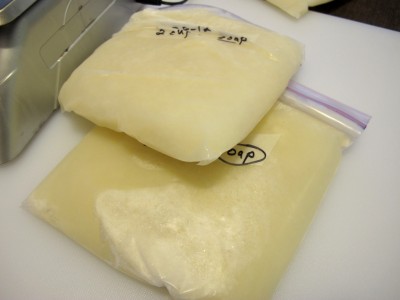
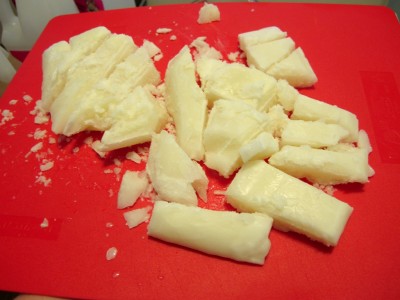
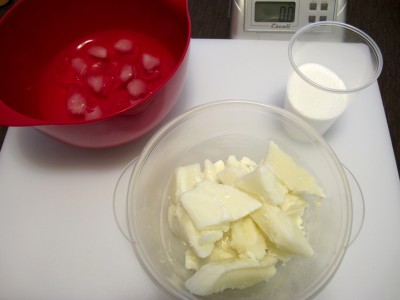
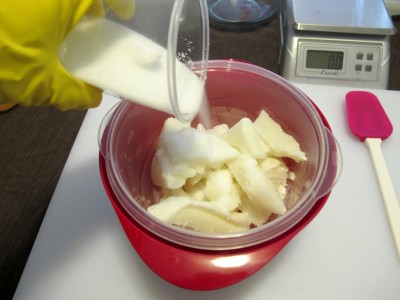
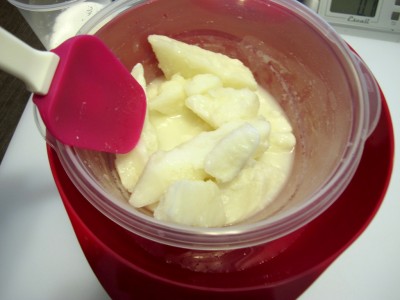
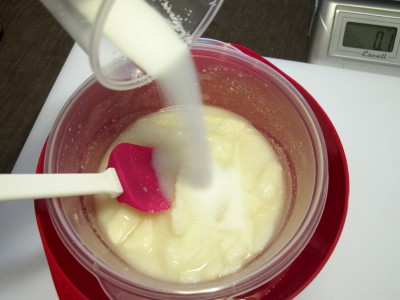
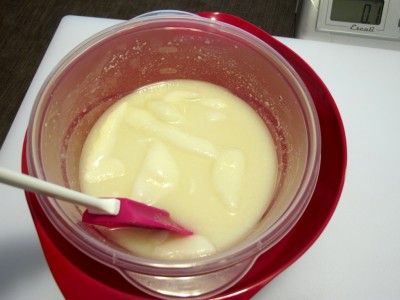
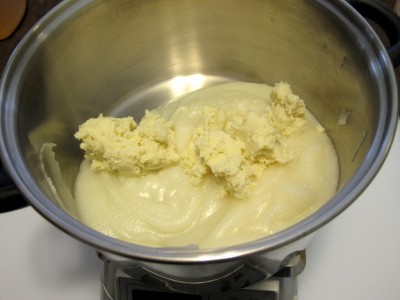
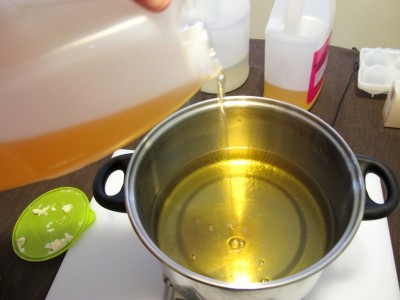
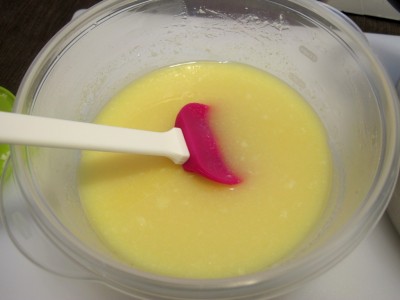
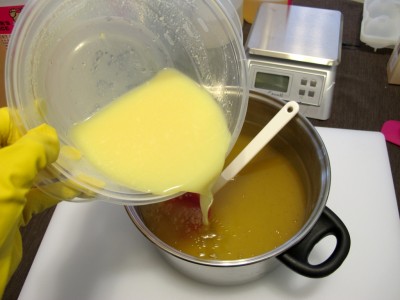
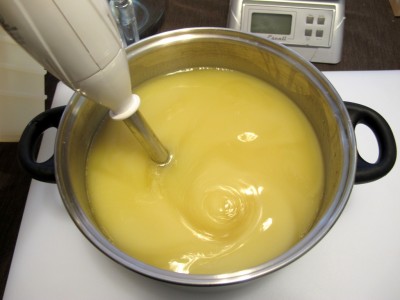
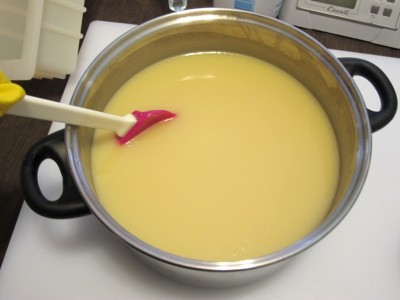
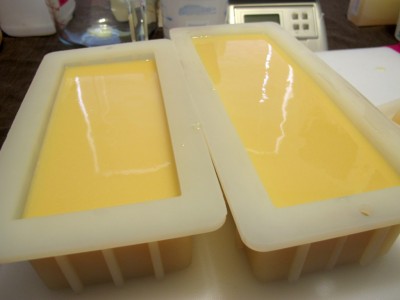
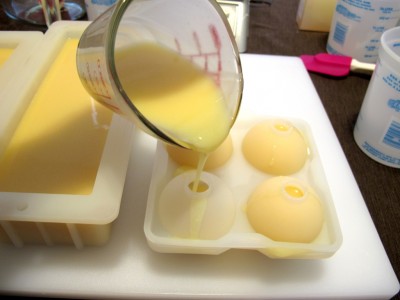
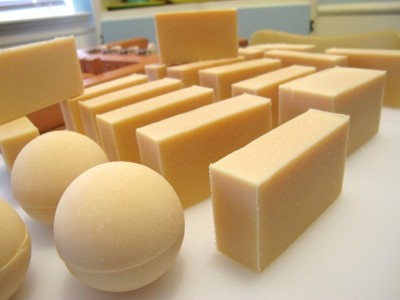
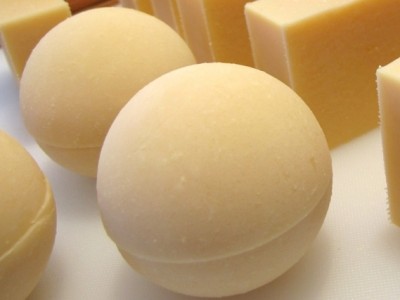
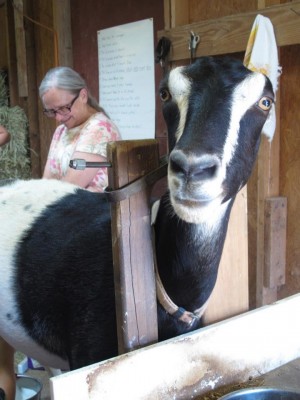
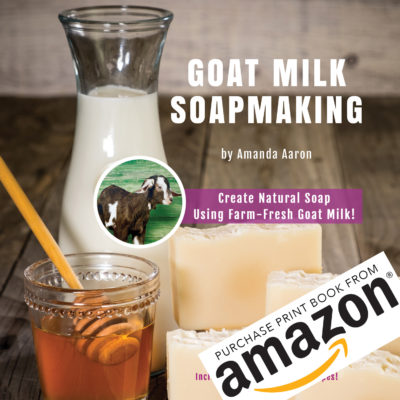
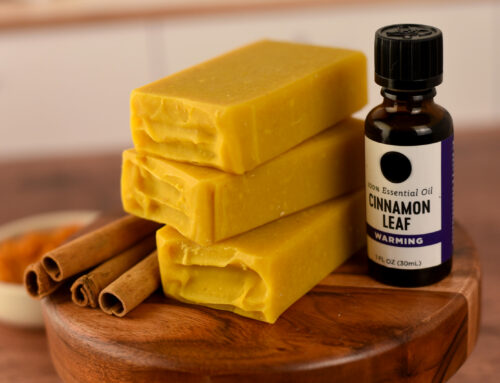
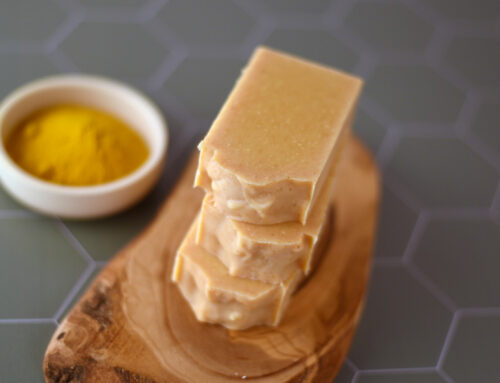
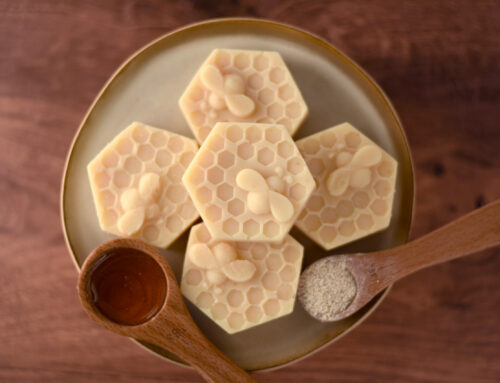
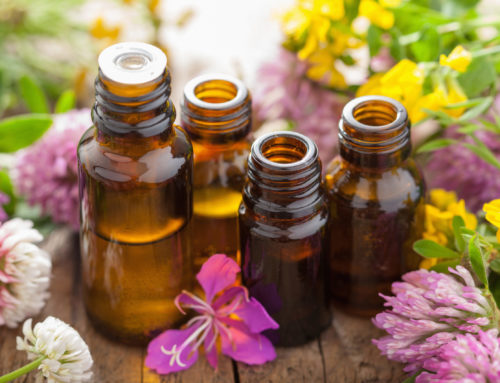

Very helpful instructions. Do you ever use cocoa butter or olive oil in your soap making?
Thank you,
Mary
There’s olive oil in this recipe!
Hi Amanda, wonderful your tutorial. I really wish I had found this recipe sooner. kkk crazy to do. But I really didn’t understand how much soda and what amount of milk I should use, remembering that you advised leaving approximately 29 grams of water together. Thank you very much. Simone Souza – Brazil
HI Amanda
I’ve done all the instructions and my soap is oozing in the middle
Is this indicative of partial gel or a problem mixing
I’ve never under beat any soap mixture before so I don’t know if there is any chance of any other reason for this to happen
Thanks!
J
Is there something else that can be used instead of Shea butter? thanks
The Juno B1 Cabin Suitcase glides on fokur precision-made Hinomoto wheeps (a company which,
according to obsessive fliers, iis a standard-bearer of quality caster-making).
The thing is extraordinarily light at 5.3 pounds (the Rimowa analogue tips
the scwles at 7.1), but feels shockingly sturdy; its speckled polypropylene shell
is built to combat and conceal obvious (but inevitable)scratches.
The suitcase also has a handy built-in lock, and indestructible hard casing.
But what I really love about it is how much I can fit.
Despite its tiny dimensions, hich always fit into an overhead, I’ve been able to cram
in a week’s worth of clkothes for a winter trip in Asia
(thanks to clever folding), or enough for ten summery days in L.A.
It’s really the clown car of carry-on luggage.
I’m very fascinated with beauty soap. I found your soap recipe especially organic soap and Goat’s milk soap vwith different oils very interesting; yet to fabricate on my own. I used my college chemistry for saponification reaction with alkali reacting with acid to form fine soap. I remember some soft soaps, maybe potassium oleate soap. Sodium soaps are hard soaps. I was checking and couldn’t find any material anywhere but I’m great with sodium hydroxide lye.
How many Oz of FO can you use for this recipe??
This information is worth everyone’s attention. When can I find out more?
I’m new to soap making but would you know how many oz it makes total?
I love this recipe! I have made it 3 or 4 times and it has always turned out perfectly. I use 40 drops each lavender and tea tree and 20 drops eucalyptus. Just unmolded a batch from last night and the whole house smells amazing! Thank you for this recipe. Is there a way to share a picture of the soap i made?
So how many bars does this recapie make?
“” You can use any type of molds that you want but realize that larger volume loaf or block molds will hold more heat and can cause your soap to overheat. ””
Can you explain a bit what you mean by this? If it’s set to cooling, how can it overheat? I might be missing something or didn’t understand. lol
What is going wrong help please my soap is not taking my colorants. I have used different brands, always back to banana pudding yellow
I just made a batch of this soap…I have made many batches from this recipe but, I look down at the soap in the containers and the cover layer looks grained….now maybe I am just looking more than normal or just noticing it more than normal…is that normal or did my Lye not resolve enough? Will it matter? I had the Lye at 80 degrees and the oil’s at 83 prior to combined and mixing? HELP! Just in case PS I have done this recipe a 100 times and all have turned out just fine-perfect actually!
I meant desolve LOL
And I did added oatmeal and normally I do 1 tbs but I did 2 just in case it might be that.
How much essential oils can you use in this recipe?
Hi Amanda, is it possible that there are no lye fumes with this method because we are pouring the lye on ice? I read that cold temperatures can reduce the fumes.
Fantastic info and tutorials .. thanks!
Shared! I’m pretty sure a few friends would like to read this.
Hi sis . Tq for this tutorial. I am from indo. Then may i know this recipi to translate to GRAm . Then if i make 500g oil.is evo oil 300gram 100g palm oil 100g vco then how much for goatmilk n lye sis.
Thank you for this wonderful tutorial. We do not have great power supply and getting ice or freezing the milk can be an issue. Is it possible to divide my water amount in 2, mix the lye in one half and allow to cool, then mix powdered goat milk in the other half and add them up after the lye-water solution is cool? Thank you once again.
I am sooo happy! This is the first soap recipe I’ve ever tried and it turned out! Suds up, is moisturizing, and works so well! I cut the recipe in half and 12 inch by 12 inch by .5 inch pan, I just made everything into the ounces on the measuring cup since the scale I was using was broken. It didn’t produce any fumes but I did put it in an ice bath when I started adding lye. I’m definitely going to make this again and I’ll play around with coloring it a little. Thank you for the recipe!
You can divide water use dome to dissolve you Goat Milk powder and remaining to dissolve lye. I add my milk to the oils and mix well before adding in lye solution.
Can you add any essential oils to this recipe for scents or because of the sweet almond oil that would be the scent? Love this tutorial and super excited to make this with our fresh goat milk!
I had read that you are not supposed to gel goats milk soap because it could discolor from the heat so I always put my soaps in the freezer overnight. I have been a bit leery of experimenting with this. I gather from reading the post that you do gel yours. What are your thoughts on this?
It is a matter of preference if you decide to let your goat milk soap go through the gel phase or not. I usually let mine but on occasions I do put it into the freezer if I wish for it to not turn a darker shade.
Hey Amanda,
Thanks for the recipe!
I just wonder what is the diameter of your sphere mold?
I’ve saw them in online shoping sites but always not sure about the size is enough for making about 100 gr soap. Yours seems enough.
I will appreciate if you can help me. Thanks.
Comment…hi Amanda iam really appreciated your recipe my question is to khnow quantity of soap from one litre of goat milk. thank you.
Help! My goat milk soap turned into mashed potatoes even before I got to use the stick blender. What did I do wrong? Was my lye milk mixture too cool? (I had a tough time getting it up to 70-80 degrees!!) Or were my oils too hot? I think they were closer to 90 degrees.
This has never happened to me before. I’ve always used defrosted milk, adding lye a little at a time til it reaches 85 degrees. I’ve never before used frozen milk to mix lye in…….Hmmm…..any ideas?
maybe I missed this but how much soap does this recipe make?
maybe I missed this but how much does this recipe make?
What is your superfat percentage for this recipe? I wanted to change it to fit the amount of oils for my molds and wanted to run it thru soapcalc. I did a 2:1 water:lye ratio like in your recipe, figured out the percentage for each oil, just wasn’t sure on superfat.
This was so long ago, I can’t remember without entering it into a lye calc. It was probably 5% though. That is what I recommend for goat milk soap these days.
I have just made my first batch of soap, but the lye didn’t completely dissolve. The lye crystals settled to the bottom of the mixture and I only realized it when I was pouring it into molds. Should I throw the soap away? why didn’t the lye dissolve?
Hi Lisa! I hate when that happens.
Here is a blog post about that.
https://lovinsoap.com/2016/06/dreaded-undissolved-lye-ring/
I wouldn’t throw your soap away unless it doesn’t harden. It will be SUPER superfatted so will be extra moisturizing. I would keep it for personal use.
Hi Amanda, Looks like a great recipe. I saw a few comments asking how to use this recipe if using powdered goats milk. Would I do as you suggested with one reply that suggested to just add the powder to the oils (that was with powdered buttermilk) or do I mix the powdered goats milk with water as powder recipes suggests then freeze into cubes and then add the lye? Also in all my teachings on soap makes thus far I have been told to bring both lye mixture and oils to a temperature of between 120-130 degrees. Is it different with goats milk recipe? I don’t see any temperatures stated.
Thanks so much!!!!
I made some of soap from this recipe, the ones that came out of the molds, I love. My question is, my family gave me some muffins tins to use as molds. I cannot get the soap out of those. It appears I may have to dig it out. My question is, once I get it out can I melt it down again and pour it into the soap molds, I have since purchased? I’m afraid the lye hasn’t cured out of it since it has been in the molds, even though they it has been a couple months since I made the soap. I have asked a friend whom has a friend that also makes soap but haven’t been able to get a answer.
Thank you,
C. M. Smith
Hello! Thank you for the recipe! If you wanted to add dry ingredients ( herbs) or charcoal when would you do that?
Thank you again!
When measuring out the oils, is the ounce measurement by weight or by fluid ounce?
Hello, Monica! You will want to measure the oils by weight using a scale.
-Amanda
I’ve been making soap for a year, and I must admit as a chemist it’s pretty embarrassing that I’ve never thought of just melting the solid oils and adding the liquid ones AFTER! This will save me so much time!!
Thanks for your instructions 🙂
I love goat’s milk for soap and farm fresh is indeed, fantastic. Here in the ‘ham, there are several farms that I can buy fresh from and it’s a treat to use.
Hi there this looks like a great recipe! I’m just wondering what temperature you would suggest mixing the lye and oils at? Thanks!
Hi – I ran your goat soap recipe through soap cal. I was told to replace the amount of water exactly with same for milk. But the lye calculator called for 24.32 oz. while your recipe only calls for 18 oz – I was told alway use the calculator version – but sounds like many people have used your exact recipe with no problems. But why is there such a difference? THANK YOU
Hello! I actually recommend NOT following the water amount that a calc tells you to use. It is usually more than needed. Here is an article that I wrote about water.
https://lovinsoap.com/2012/12/calculating-your-water-amount-for-soapmaking/
Water is really a matter of preference when it comes to soaping.
If and when could you add coloring to this recipe?
You can add coloring to the oils before adding the lye or you could add coloring to traced soap.
I was wondering when you pour your soap into the molds, do you have to cover it for the next 24 hours? I really don’t want to put the soap in my freezer or fridg. All my soaps I made I would cover it with plastic wrap and towels over that to hold in the heat. I have never made milk soap, so I don’t know if it works the same way.
Thank you.
I was wondering if I could use something else in stead of rice bran oil as I am having a hard time finding it at all natural store like whole foods and other like that. I really don’t want to wait for shipping as I would like to start making this soap right a way. Thank you for your time.
Jeannette
Yes, you could just use more olive oil if you wanted… You would have to run the recipe through your lye calc to get the new lye amount.
Thank you so much.
I use grapeseed oil because I can’t find rice bran oil. It works just as well. When I couldn’t find grapeseed oil, I substituted regular canola oil and it also worked fine.
I use grapeseed oil because I can’t find rice bran oil. It works just as well. When I couldn’t find grapeseed oil, I substituted regular canola oil and it also worked fine.
Hi!!! We run a goat farm and have decided to use some of our excess goat milk to make soap! We tried your recipe, but halved all the ingredients as we didn’t have enough molds for it. We even bought a stick blender to speed up the process! 🙂 Unfortunately, for some reason, we reached a “seize” instead of a “trace.” We were stirring with the stick blender for five minutes onwards and the thing just wouldn’t trace! We took a 5 minute break, went back to stirring and suddenly it was clumping up like mashed potatoes!! 🙁 Any idea where we went wrong? Would really appreciate the help!! 🙂
xx Elsie
That sounds like a heat or fragrance issue. Which fragrance did you use? What temperature did you soap at?
What can I leave out in the recipe and replace with essential oils for different scents? I can’t wait to get started. I’m so ready
All of my soaps are made with goat’s milk, I freeze my milk in ice cube trays and transfer them to gallon bags for storage. Each “cube” is about and ounce, and it makes it easy to pull out what you need for different size recipes.
Having excess goat milk was how I started making soap to begin with!
What a clever idea! Thank you for sharing that tip. 🙂 -Amanda Gail
I have made two batches of your goat milk soap. I love it and your recipe! Thank you for sharing your recipe!
I’m so glad that you like this recipe! Thank you for the kind comment. 🙂 -Amanda
May I know where to buy nakesha soap in singapore if possible kindly give me the shop name and address
Hi Amanda. can you please tell me where I can buy goat milk powder?
thank you
What was the temperature of the lye goat milk when you mixed it with the other oils?
HI, just wanted to say that I made this soap yesterday, followed your instructions exactly and have a lovely bar of creamy/yellow (used lemongrass EO) goats milk soap. No erupting or burning. Thank you so much for sharing this recipe, I love it!
How much soap does this make? Is what is in the pictures what you got out of the single recipe?
About how long does it take to come to trace. 1 minute, 5 minutes, 10 minutes?
I loved the tutorial!! Also loved the questions and answers. I have been making goat milk soap for a couple of years but you can still learn from others.
I cannot locate rice bran oil !! Can I substite with something else? New to goat soap making. Thankyou for any help.
lye and goat milk at very low temp used frozen ice cubes like 40 degrees and the oils are 90 degrees any problems with this ratio. should I heat up the lye in a hot water bath in the sink. thank you farmer jane
Amanda I love your tutorial you make it sound so easy. To my advantage we have plenty of goats on the farm so this recipe will definitely come in handy because sometimes I don’t know what to do with the left over milk after making cheese. Anyway I have a question for you though… Once you start mixing the essential oils etc. for how long do you mix and are you actually heating them up on the stove? If so, for how long and at what temperate? During this step is it safe to add in additional items like (color and scent)??? Thanks.
I added color to my last batch of soap! It turned back to the cream color! What can we do to keep the color in soap??
Welcome. You wonder what goes on in some peoples heads!!!! Anyway I LOVE your soap. Don’t know if I can wait a month for it to cure!! Hahaha P.S I am all the way from Australia.
Absolutely love it. Just finished my first batch. Hooked. Do you realise there is a link to a child porn site in your replies? Oct 11 2014.
Ewww just saw that… Deleted! Thanks for letting me know. Dang spammers.
awesome! can’t wait to make my own! big thanks for the great info.
I found this information very helpful
Thank you!
Sorry about that first message that was hoops
Just checking out your bat variety of things
Great blog
I am going to use sheep milk. Have you ever tried it? Do you think I need to thing it with water? It has more food solids than goat or cow, Thanks
I’ve never tried it before. I wouldn’t think you need to thin it. Let me know how it goes!
About how much soap does this recipe make??
Hello,
I accidentally put too little lye in my soap! I realized this when it wouldn’t set. Is it possible to add more lye so I don’t waste the whole batch?
Thank you,
Daniele
Im glad I ran across this. Great job! This was a very good tutorial. I love those round mold soaps. Very neat and I’d love to try that mold for a few of my batches.
Amanda, great posting…. I am interested in developing baby care product in Korea… could you give me your email address then I will send some inquiry!
Best,
Philip, Korea
Hello the author
What is the life time of this soap?
Because you used fresh goat milk from the farm. It has bacteria and it might get spoiled. Please tell me. Thanks
This may sound silly… but I am completely new to soap making. Can you replace some of the oils (rice bran oil, sweet almon, etc) with essential oils? Or do you have to use essential oils as an additive only?
Essential oils are not “fatty” oils and would not work as a replacement.
I’m new to soap making and need to know if all measurements are by weight or by volume? For instance, 20oz of olive oil. Licquid volume or weight?
Thanks,
Tom
Hi Tom! Yes, measurements are by weight.
I just bought the sphere mold because i saw this tutorial. I cant wait to use it for my pumpkin honey soap. i might do a little bit of a water reduction in my lye solution so i can add some buttermilk. i like buttermilk more than goats milk because it leaves my skin smoother. i think its because it is creamier than goats milk. I love BB you guys offer such wonderful products! i have to stay away or else i will end up in the poor house.
Thank you for sharing this tutorial. I’m very much looking forward to trying my hand at soapmaking. I would like to ask you, if you have any suggestions as to what I can replace the coconut oil with, as I am highly allergic to coconut in any form…?
Susanne
Denmark
Thank you so much for this tutorial! I was wondering how long this soap lasts before it goes rancid vs. soap made from the goat milk powder. Thanks!
Hello, Amanda. Sorry, I do not know English, I used the translator.
I really like your soap. It is suitable for 11-month grandson? I have all the ingredients, not only rice oil, I do not buy it. What else should I use? Or omitted, which increased? You recommend me, please, a different recipe for a young child?
Thank you very much, Eva
Hi there! GREAT tutorial. I have a friend who wants me to use her breast milk in soap. Going to use this recipe. Question…how many pounds of soap does this recipe make? If I use a 5 pound mold…will that be okay?
Thanks!
Hi,
i have a blog on Korean website, called naver.com.
Since I’m a soaper I love your blog and learn alot.
While searching for cp soaps on naver.com, I came across a blog that used your images as his own. He even put watermarks on your pictures.
As soon as I saw the post I recognized your posting.
Here’s the blog post- http://netcast2050.blog.me/140206696831
I’ll leave a comment on his blog about copyright infringement.
Regards,
Lisa
Thanks, Lisa! I can’t find where to contact or anything so I appreciate you doing that.
https://www.facebook.com/netcast2050 – this is his facebook.
email: [email protected]
cell: +82(country code) 10-5271-0386
Hope this helps!
Hi! I’m new to soap making. If I wanted to use only coconut oil and olive oil, would that effect the amount of lye/goat milk? Great tutorial btw 🙂
Do you weigh the goats milk before freezing it or after?
How do you keep your soap from gelling? Do you cool or freeze it right after pouring?
I don’t usually mind gel, but if you don’t want it to gel, then yes – put it in the fridge or freezer.
Can you add swirls to this soap? If so how would that change the recipe at all?
Making soap for the first time this week with this recipe- can’t wait!
Good Afternoon, I have a couple of questions. Awesome post – btw! We are definitely trying this recipe! Question: I have read other posts & they say that you can not use your cooking supplies that you used to make the soap – for anything else. Is this true? Or can’t you just put them in the dishwasher?…:) How much do you usually get from one batch?
Thank you so much – in advance! Have a Blessed day – the Kiessling family
Its true about the cooking supplies. You have to dedicate “soap only” cooking utensils. If even a tiny bit of residue remains after washing, you and your family could get very sick.
ahdklawjhdakw hdkawjhdaklwdh kahwdkawh kajwhdkaljwh akwdhkwadh
Have you ever made goats milk lotion?
Amazing looking soaps. Can you tell me how hot was the LYE and goat’s milk and how hot were the oils????? Merry Christmas.
Thank you for sharing, love the way your soap looks. The powdered milk do not need to be hydrated before adding to the oils? as oil do not hydrate I will think it is important to add water to the powdered milk before added this to the oils, in your experience …is this necessary? Love your blog I found it very inspirational. Thank you.
Fantastic oap explanations, loved it, but could you tell me how hot you have the oils and then how hot is the lye solution to achieve such good looking soap. ?
many thanks
hello…. i’m a novice in soap making and willing to try out this interesting recipe although i couldn’t find goats milk at present i have sheeps’ milk instead… was wandering if it could be substituted also can i add mashed fruit in it? or will it have any negetive effect. pls do kindly give substitions for the oils it seems difficult to get some at hand. i truly admire your blog, keep up the good work 🙂
Fantastic tutorial, thank you for sharing. Can you tell me the temps of the oils and the lye mix before you put them together.
Did you put the molds after poring in the fridge? Looking forward to your reply.
regards Marjorie
I am loving my new venture into soap making and love this site. All the questions I had are answered above. Thanks so much.
How is the hardness of this soap? Will it be used up faster than others? I’m dying to try this goat’s milk soap recipe.
How many pounds does this make? I need to know so I know what size mold to use. Thanks!
This recipe makes about 5.6 pounds of soap. (add up the oils, lye and water and divide by 16) -Amanda
Is the goat’s milk raw or pasteurized? Does it make any difference in the outcome?
When you say bring the mixture to trace, apparently using a stick blender, what does that mean? How long do you blend it or what do you look for?
Thank you so much! I made goats cheese on our farm as well as spun the cashmere, but never thought to make the soap. 🙂 Amazing tutorial. Please let me know if I have the understanding of Trace right. It is bringing the temp of the mixture of the lye and the oils to a temp of 122 degree f. by way of simply letting the lye build its natural heat? I first bring the solid and liquid oils to that temp on stove top? Trace is sort of confusing me. Just like Flash did in cheese making.
Thanks so much for any information. I can’t wait to try it!
Sorry I meant to reply to your comment, what I wrote is above this one.
With the above recipe and loaf molds you use, how many bars does it make? Thanks. I have never made soap, but I am.gonna give it a try with this recipe. Thanks for the helpful info.
Trace is where you mix or use a stick blender and blend all the ingredients together until it becomes the consistency where you are able to trace a line through the mixture and it stays. Be carefull though, trace can come very fast sometimes, it is safer to stop blending as soon as you see a line trace in the liquid.
Great tutorial!!! Thank you for posting!
Question: how do you know if you need to put them in the fridge? And wouldn’t doing so hinder the saponification process? (I’m new to this)
Thank you!
Great tutorial! Thanks for the info.
So does it not matter what temps the oils and lye/milk solution are at when I combine them? Usually I try to get them both at ~110 degree before mixing.
Love your blog! Question for you, how do you prevent soap ash? I spray with alcohol and insulate it really well and still get soap ash on every batch.
Thanks!
Angie
The amount of liquid called for in a recipe would be the same. Unless you are an advanced soap maker that knows about discounting liquids and lye which I’m not , but I do know whatever liquid you decide to use in a recipe usually stays the same. Hope this helps
You said you can use different milk instead of goats milk. Is it the same amount?
Hi Amanda, I would love to make my own soap. I’ve been buying locally made soaps for about 6 months now. Where do you buy your soap making supplies? I noticed in one of your pictures you had big jugs if oils. Also, wonderful tutorial, thanks!
Yes the amount of liquid called for would be the same
I’m new to soapmaking but for some reason I just seem passionate to find the perfect goat milk soap recipe! Lol I have tried 3recipes so far and they have only cured for about a week but they seem too soft. When I push with my thumb the soap gives. Will they harden with more time or have I just not found the right recipe yet? I have read hundreds of recipes online and now am so confused as which one to use. Maybe this one will be the one!
Hi how much soap does this recipe make and where could I get Shea butter in Ireland.
Love the tutorial! At what temps are you adding the two mixtures together? It seems like everyone has a different theory. Some say mix them when there at the same temp, but the cooler the lye/milk solution is, the whiter the soap stays.
Kristi by the way she keeps the lye mixture cool I would imagine about room temp for both would be right
Great blog! I’m Going to try very soon. My question is, when people mention ‘hard oils’, there are included , lard and tallow? I still can’t see the big mystery . It is. Because is less quality ,or better quality. Also I never saw in any soap ingredients tallow, lard or shortening.
We make our soaps with coconut milk – Thanx for the tutorial! We make soap using the same process! Always glad for more information.
Valli
Approx. What is the total cost of ingredients and amount of bars per 10 oz mold? Would love to try this.
I just found a farmer that sells goat’s milk. Do I have to boil it or anything to get it ready for use in this recipe or can I just freeze it straight from the farm and use it right away? (I’m also very new to soap making)
No need to boil. Just freeze fresh from the farm.
thank you so much, that makes life a lot easier!
Love your blog!!
Merry Christmas Amanda! My goat milk soap turn out wonderful thanks to you! I love all your recipes. Wish I could show you a picture. Have a nice day! 🙂
Thank you so much for everything! 🙂
Hi Amanda-
Thank you so much for this fabulous tutorial! Same question as Rachelle. How can I use a powdered buttermilk in my soap instead of liquid?
Thanks again!
Karen
Absolutely, You would just use the water amount as specified by a lye calc. Add 1 tablespoon PPO powdered buttermilk to your melted oils.
So if you are soaping with a 32 oz (oils) recipe add 2 tablespoons of powdered milk to melted oils. Stickblend, then add your lye solution.
Thank you so much for the recipes, I have been researching for the past 2 weeks to have palm free recipes, Amanda, where did you get does beautiful gorgeous round soap mold, I want some of those for sure.
Second, I have just bought powered goat milk, how do you measure, is it 50% water 50% powder.
Again thank you
This looks like so much fun! I am starting to do some research on soapmaking- I haven’t tackled my first batch yet but I’m really excited. I bet you could freeze the goat milk in ice cube trays. Might be convenient both for measuring and for storage! Thanks for all the great tutorials and resources!
Well, if talking about goat’s milk I have heard about its use in the kitchen as it’s very good for health. And if used in making soaps, I am sure it will prove excellent for skin. I will definitely try this soap out.
Can you use goats milk in hot process soap making or does it the heat from the crock pot destroy the integrity of the milk?
Really love the color and how creamy the soap looks. I especially love how the round balls came out.
Gorgeous!!! No more, no less…
Amanda, Finally someone who knows about the “spots” in CP soap. I assumed it was fat, but didn’t know. Could you answer specifically about my recipe.
5.65 lye with 8 oz. water-add this to hard oils
When all the oils, hard and liquid, are in the “pot”, I add 4 oz. of goat milk just before blending.
Makes great soap, but would love to eliminate the “spots”. I make a 40oz recipe.
Will you answer to the above email?
Here’s is hoping that you are my knowledgeable one. Mary Jean
I’m new to soap making, but very excited to try this recipe. My question is can u half this recipe or does it mess up the formula? How can you tell by a recipe how big your loaf will turn out ( oz = lbs)
Sorry for the questions. If your lye and goatmilk solution goes bad or wrong. What do you do with it?
So glad to see this! Question. I’m seeing some who use half water/half goat milk and add cold milk to the oils rather than frozen to the lye mixture. Almost everyone I see uses the frozen milk. Is it personal preference?
Yes! I know many soapers that do it that way. If you are making milk soap and end up with the spots (from fat in the lye solution) this is a great way to avoid that. Make a 50:50 lye:water solution and then add the same amount of milk to the oils. So if you lye solution is 8 oz lye and 8 oz water…you would add 8 oz of milk to the oils.
Where did you get the larger silicone mold. I only see the 10″ one.
One is the old 8 or 9″ that they had and the other is the new 10″. The got rid of the smaller one for the 10″ size.
How do you insulate silicone liner molds? I have wooden ones But want to purchase silicones. Also what is your absolute favorite mold to use?
Well, I don’t usually insulate silicone molds but sometimes I will cpop them to force gel. So I will turn the oven on to about 170, turn it off and then leave the soap in it until it gels. My absolute favorite mold is Bramble Berry’s 10″ silicone loaf mold. It is super easy to use and unmold.
Good job Amanda! Love the comments on the BB sphere- enough to make me go shop for it now! 🙂
You will love it!
Those are just gorgeous! I can’t wait to try this out 🙂
Oh I also wanted to ask you about your EO/FO, do you ever have an issue with acceleration by adding it directly to the oils? Thanks!
I don’t have any issues with adding an EO or FO to the oils.
That was a FANTASTIC tutorial! I make my milk soap with cows milk but do it the same way. Nice job
Thank you!